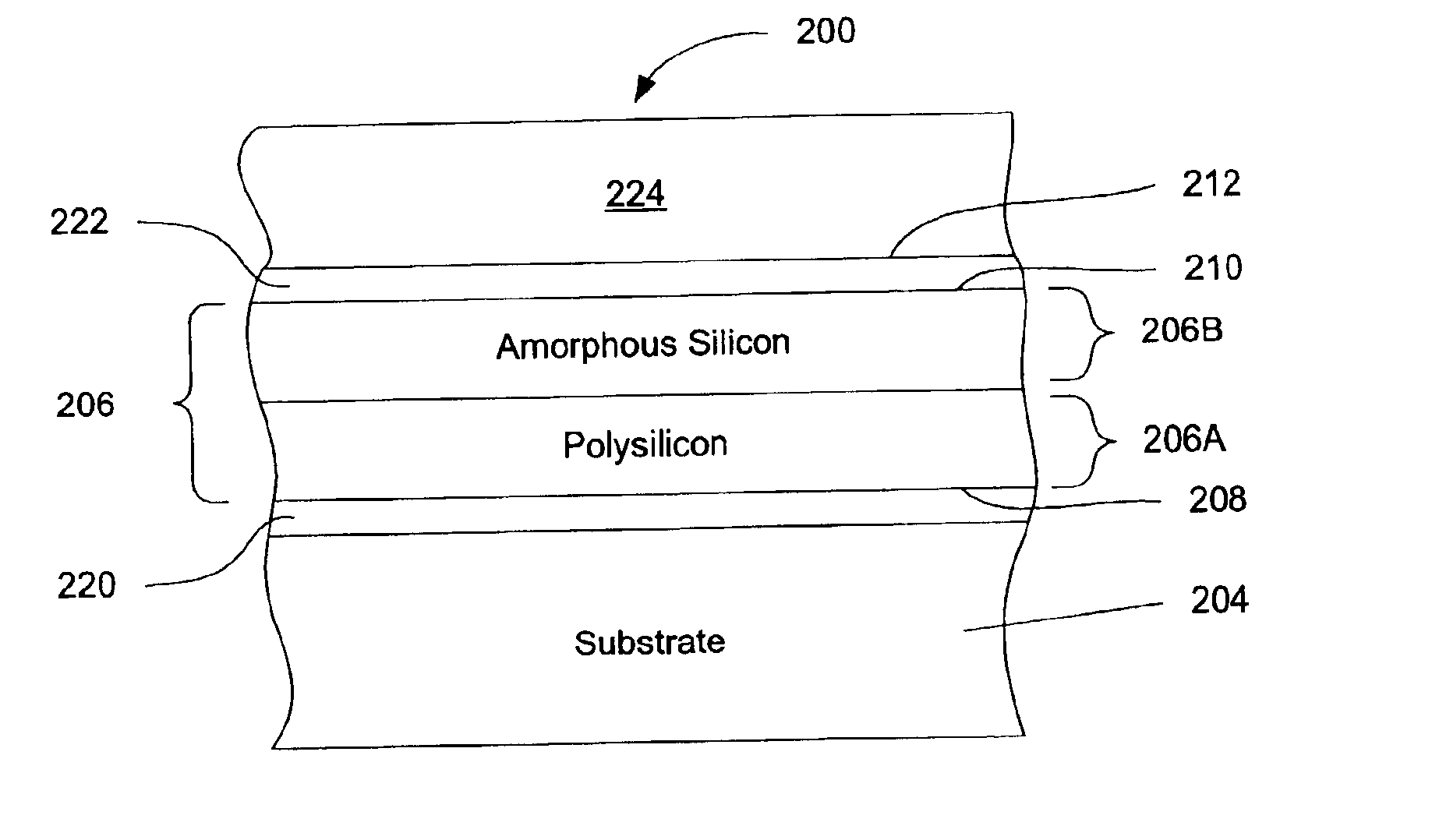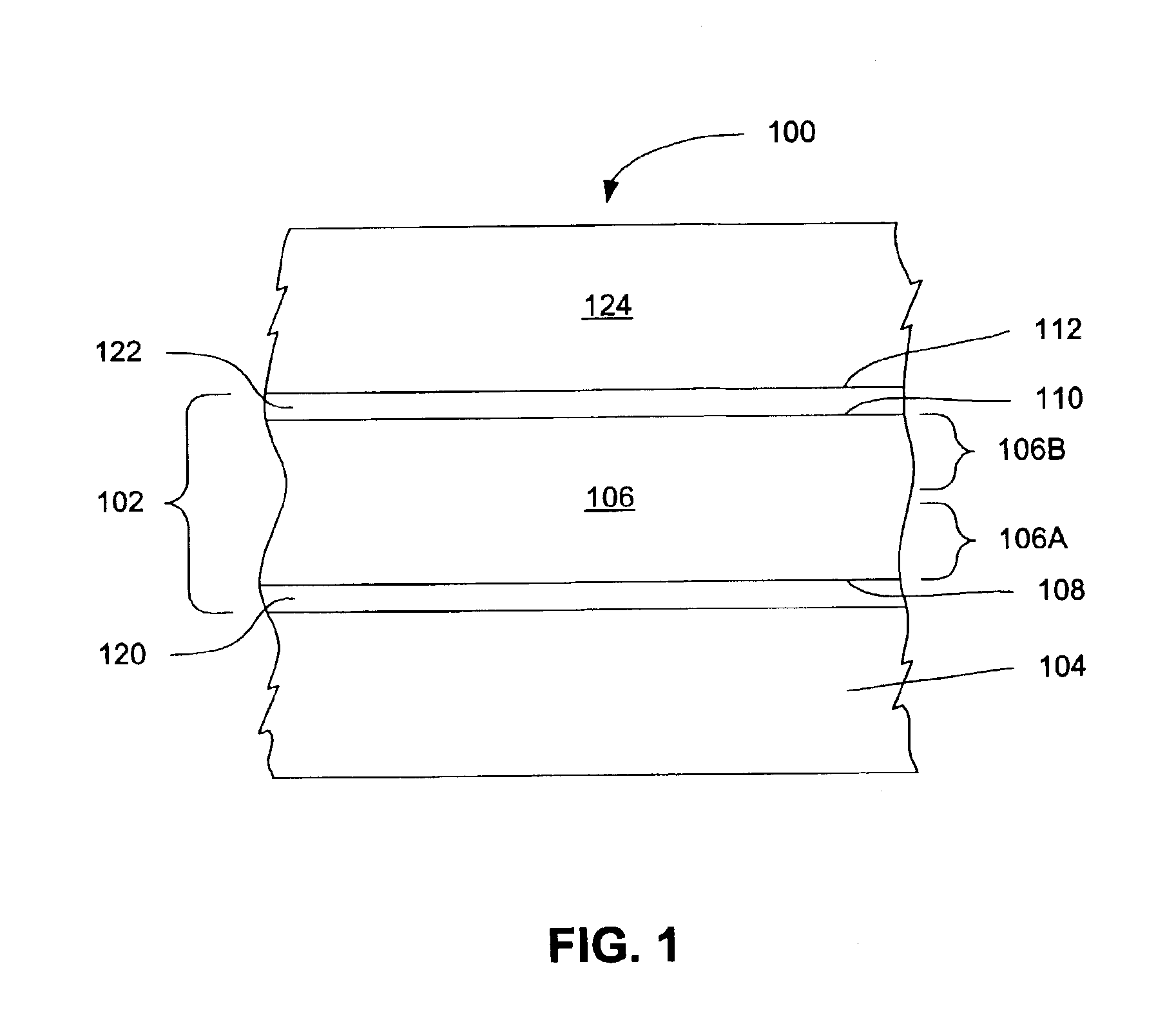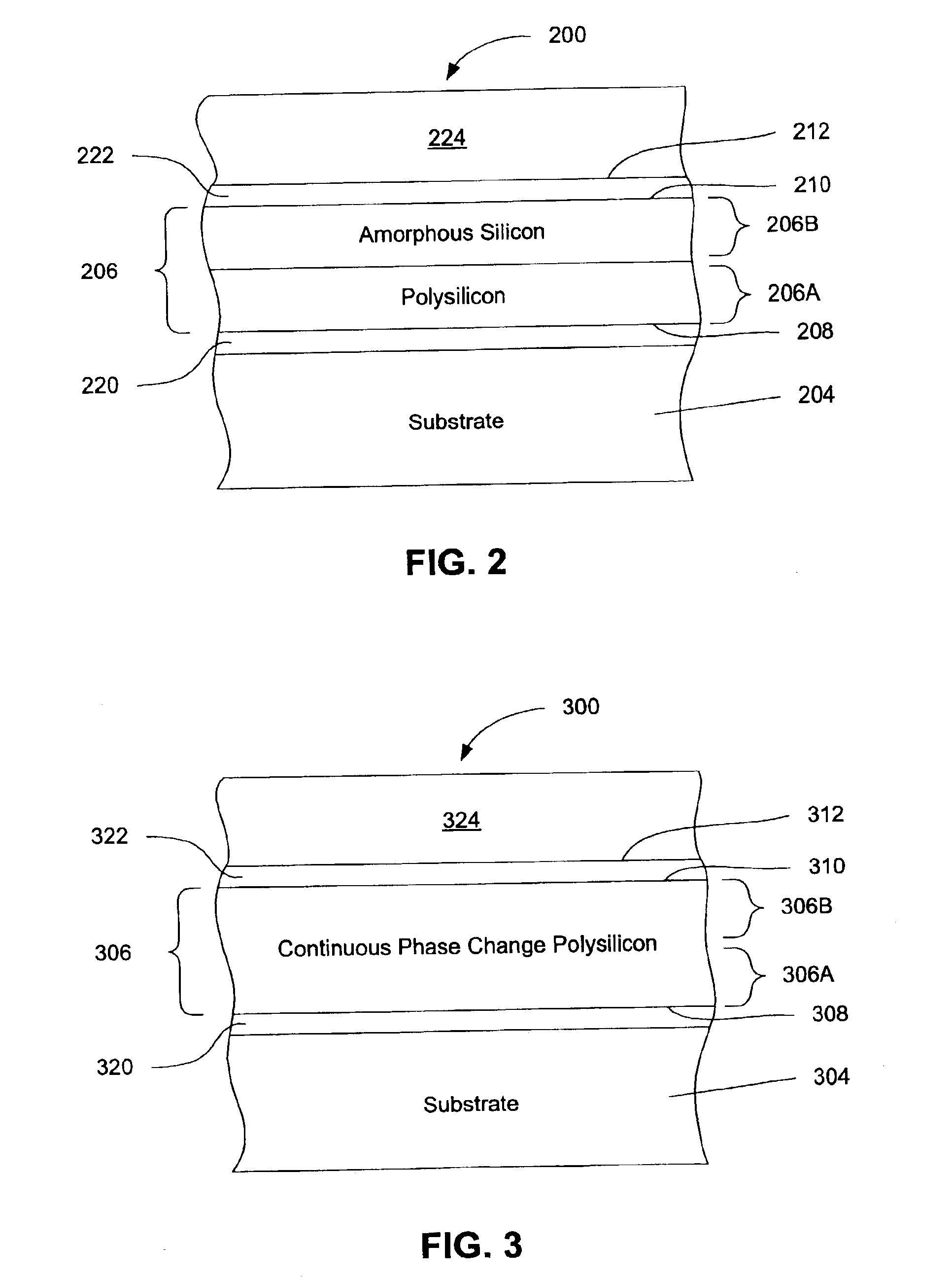Method for forming silicon film with changing grain size by thermal process
a technology of thermal process and silicon film, which is applied in the direction of bulk negative resistance effect devices, coatings, transistors, etc., can solve the problems of increasing the strength of electric fields across the tunnel dielectric, uneven upper surfaces of gates made in this manner, and uneven upper surfaces of gates, so as to minimize increase field strength. , the effect of increasing the strength of electric fields
- Summary
- Abstract
- Description
- Claims
- Application Information
AI Technical Summary
Benefits of technology
Problems solved by technology
Method used
Image
Examples
Embodiment Construction
The following detailed description is made with reference to the figures. Certain embodiments are described to illustrate the present invention, not to limit its scope, which is defined by the claims. Those of ordinary skill in the art will recognize a variety of equivalent variations on the description that follows.
A semiconductor device may be fabricated by processes that include the formation of multi-layer assemblies through vapor deposition onto a substrate structure. In addition, the electrical properties of the multi-layer assemblies used to form device microstructures can be modified during deposition by the selective inclusion of other elements or compounds during or after the deposition process, to obtain results referred to as “doping.”
FIG. 1 is a cross-section diagram of a silicon device structure 100, incorporating features of the invention. The structure comprises a substrate 104, a multi-layer assembly 102 superposed on the substrate, and at least one additional layer...
PUM
| Property | Measurement | Unit |
|---|---|---|
| temperature | aaaaa | aaaaa |
| temperature | aaaaa | aaaaa |
| temperature | aaaaa | aaaaa |
Abstract
Description
Claims
Application Information
 Login to View More
Login to View More - R&D
- Intellectual Property
- Life Sciences
- Materials
- Tech Scout
- Unparalleled Data Quality
- Higher Quality Content
- 60% Fewer Hallucinations
Browse by: Latest US Patents, China's latest patents, Technical Efficacy Thesaurus, Application Domain, Technology Topic, Popular Technical Reports.
© 2025 PatSnap. All rights reserved.Legal|Privacy policy|Modern Slavery Act Transparency Statement|Sitemap|About US| Contact US: help@patsnap.com



